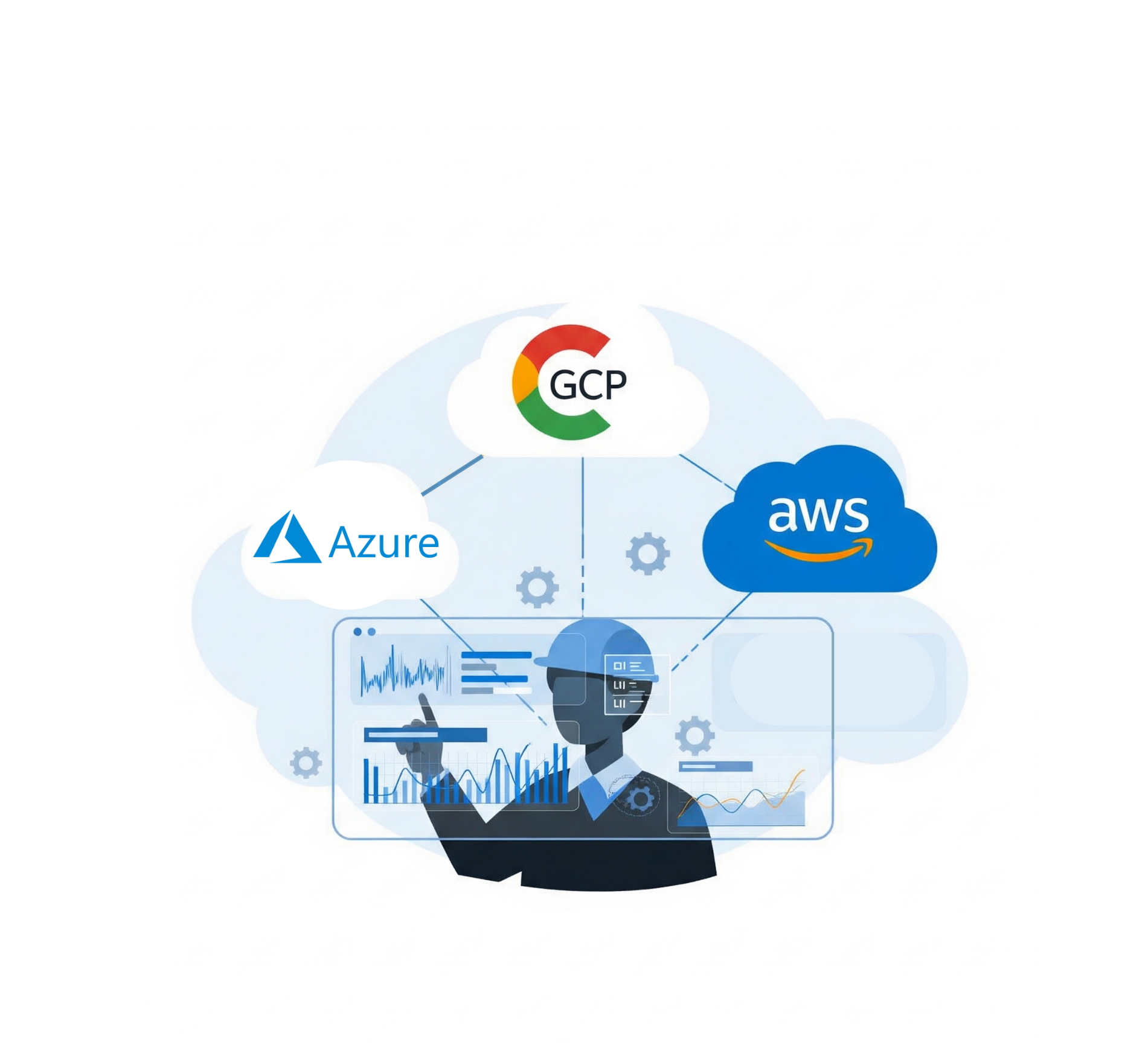
Transcloud
April 17, 2025

April 17, 2025
Introduction
Businesses rely heavily on data and applications to operate efficiently in today’s digital-first world. However, unforeseen events such as natural disasters, cyberattacks, or system failures can disrupt operations, leading to significant downtime and financial losses. To prevent these disruptions and ensure business continuity, businesses are increasingly turning to cloud-based disaster recovery plans. In this blog, we explore the importance of cloud disaster recovery, scalable data recovery solutions, and how cloud backup services are key to safeguarding your business. Disaster Recovery (DR) refers to the process of restoring critical systems, applications, and data after a disruptive event. Cloud disaster recovery goes beyond traditional methods by offering scalable, cost-effective, and geographically redundant solutions. By replicating data and applications in remote servers, businesses can ensure rapid recovery and minimal downtime after an incident.
Scalable Cloud Solutions for Business Continuity
Scalability plays a key role in business continuity by ensuring that your systems and infrastructure can handle the increased demands during disaster recovery. Here’s how scalable cloud solutions can help keep your business resilient.
Challenges in Implementing Scalable DR Solutions
Implementing scalable Disaster Recovery and Cloud Solutions (DRCS) comes with its own set of challenges.
Building a Cloud Disaster Recovery Plan
A well-defined cloud disaster recovery plan ensures business resilience.
Cloud Backup Solutions: Protecting Your Data
One of the cornerstones of disaster recovery is data protection and backup in the cloud. Cloud-based backup services ensure that your critical data is securely stored and easily recoverable.
Ensuring Business Continuity with Secure & Scalable Solutions
To ensure business continuity, businesses must adopt secure and scalable solutions that can adapt to evolving needs and withstand disruptions.
Secure Data Protection
Scalable Infrastructure
Cloud Resilience Strategy: Preparing for the Unexpected
A cloud resilience strategy goes beyond disaster recovery by focusing on proactive measures to prevent disruptions. This includes:
Safe Guarding Reputation
Reputation is a delicate yet critical aspect of a business’s success. How a company handles a disaster can significantly impact public perception and customer trust. Quickly restoring services demonstrates reliability and professionalism, even during challenging times. Conversely, extended outages and data loss can cause irreparable harm to a business’s reputation.
Cost-Effectiveness
One of the key advantages of DRaaS is its cost-effectiveness. Traditional disaster recovery methods often require substantial investment in hardware, infrastructure, and human resources. These costs can be prohibitive, especially for small and mid-sized businesses. DRaaS, on the other hand, operates on a subscription-based model, which allows companies to convert capital expenses into manageable operational costs. Businesses only pay for the services they need, making DRaaS an economical option that does not compromise on effectiveness. This scalability in pricing ensures that organizations are not overextending their financial resources on seldom-used technologies.
Developing a Disaster Recovery Plan Checklist
A comprehensive disaster recovery plan checklist assists businesses in covering all necessary bases:
How the Cloud Has Improved Enterprise Disaster Recovery
Cloud technology has transformed enterprise disaster recovery, offering flexibility, scalability, and cost-efficiency. Unlike traditional on-premises solutions that require heavy upfront investments in duplicate hardware, the cloud allows businesses to access resources on-demand, often through pay-as-you-go models, significantly reducing initial costs.
Additionally, cloud solutions provide geographic redundancy, enabling data storage across multiple global locations. This ensures minimal downtime during local failures, as data can be quickly accessed and restored from alternate sites. The cloud also accelerates recovery speeds, a critical advantage in disaster scenarios.
Regular Testing and Monitoring
The Future of DRCS in the Business Community
The future of Disaster Recovery and Cloud Solutions (DRCS) is set for growth, driven by scalable, secure, and cost-effective solutions. Technologies like AI, automation, and hybrid cloud models will enhance recovery speeds and resilience. As cyber threats and regulatory demands evolve, DRCS will ensure business continuity and protect reputations, making it a cornerstone of modern business strategy.
Conclusion
Cloud consulting company, Transcloud Labs, provides secure, scalable, and customized disaster recovery solutions that ensure business resilience. Whether you need help with cloud security, managed services, or optimizing infrastructure, we minimize downtime and protect your data—on-premises or in the cloud. Partner with us to safeguard your business operations and ensure seamless continuity, with expertise powered by Google Cloud Platform (GCP).


